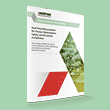May-2025
Advancing the circular economy for waste plastic
Advanced recycling processes can turn what was once considered a waste product into a valuable commodity.
Geoff Brighty
Mura Technology
Viewed : 54
Article Summary
In September 2024, scientists at the University of Leeds published the results of an experiment that used real-world data and machine learning to simulate waste disposal numbers in countries around the world for the year 2020 (Cottom, Cook, & Velis, 2024). They calculated that more than 52 million tonnes of mismanaged plastic waste entered the environment that year, with 70% of it coming from just 20 countries.
This problem has only grown in scale over time. Even since 2020, the production of plastics has continued to climb (Statista, 2024), and much of the plastic produced each year is disposed of within a year of being manufactured (Hopewell, Dvorak, & Kosior, 2009). So far, humanity has struggled to find solutions to manage the volume and range of plastics produced.
Plastic has become ubiquitous in our global economy due to its many essential applications. However, this variety, the differences in chemical makeup between various types of plastic – makes mixed streams of plastic waste durable but very difficult to recycle, leading to mismanagement and the pollution of our natural environment. Solutions that can scale to meet this global challenge are urgently required.
As the world attempts to transition away from the use of fossil resources in sectors such as power generation and transport, parts of the world are also attempting to transition from a linear to a circular economy. To accomplish this, a new set of technologies intended to revolutionise how petrochemical products are used in the manufacture of plastic packaging are beginning to reach key stages of successful commercial implementation.
Despite not currently being defined in any European regulation, a wide array of advanced recycling (sometimes referred to as ‘chemical recycling’) technologies is poised to transform how the global economy manages and re-circulates the mountains of plastic waste it produces ever year.
Advanced recycling technologies
Traditional mechanical recycling can process some of the world’s plastic waste, particularly single-polymer types. This process involves sorting, shredding, washing, and separating the waste into similar polymer groups, which are heat treated to remove odour and then melted and formed into pellets. These pellets can be remelted, becoming the constituent ingredients for new plastic products, albeit not those intended for contact-sensitive applications, such as food or medical packaging. However, a considerable proportion of plastic waste cannot be mechanically recycled, such as contaminated food-contact films or layered materials. This is where advanced recycling comes into play.
The European Coalition on Chemical Recycling broadly defines advanced recycling as “converting polymeric waste by changing its chemical structure to produce substances used as products or raw materials”. Importantly, this definition excludes processes that yield products “used as fuels or [as] means to generate energy”.
There is a need for recycling solutions that can process a wider variety of polymer types together, such as the mixed streams of hard-to-recycle plastic waste produced by households, economically and with minimal impact on the environment. It is with these considerations in mind that the hydrothermal liquefaction (HTL), process, trademarked as Hydro-PRT, was developed by Mura Technology.
Introducing Hydro-PRT
In brief, Hydro-PRT is an end-to-end hydrothermal advanced plastic recycling process that uses supercritical water to crack post-consumer, multi-layer flexible and rigid mixed plastic waste streams into industry-ready, circular hydrocarbons. Mura develops its own build-own-and-operate Hydro-PRT recycling facilities and sells licences for use of the technology through Mura’s exclusive Global Licensing Partner, preferred engineering partner, and investor, KBR. KBR has already agreed licences for the Hydro-PRT technology with organisations including LG Chem and Mitsubishi Chemical.
This next-generation process is unique when compared with other advanced recycling technologies. It is differentiated by its use of supercritical water, which is water brought to a state of increased temperature and pressure until it exceeds its critical point, where it exhibits both the properties of liquids and gases. Using supercritical water in this way brings numerous benefits when treating plastic waste streams, ultimately making possible the processing of those waste streams usually considered unrecyclable by other existing recycling technologies.
Hydro-PRT is insensitive to organic contaminants such as paper labels and cardboard or organic matter like food residue, making it an ideal solution for the contaminated plastic waste streams that typically get incinerated within the UK and Europe. A 2024 study estimated that as much as 46% of UK household plastic waste is incinerated (Greenpeace UK, 2024). By providing an alternative destination to energy-from-waste facilities for plastic waste, the greenhouse gas emissions resulting from incineration are consequently avoided.
Unlike pyrolysis, an alternative form of advanced recycling, the use of supercritical water during conversion allows for highly efficient and homogeneous heat transfer, as it surrounds the plastic waste rather than heating from an external source. The use of supercritical water also offers a source of hydrogen, which can saturate the broken chemical chains in the recycling polymers, with the hydrogen transferring from the water into the end products. The presence of supercritical water in the reaction also limits the formation of char, meaning the quality of the final output product is not affected.
These homogenous reaction conditions, in turn, allow the cracking rate to be controlled during operation, acting as a suppressant to unwanted free radical reactions. This ultimately makes very high yields of high-quality circular hydrocarbon products possible and gives them increased stability.
Practically, the process begins with the transportation of post-consumer plastic waste, which could not otherwise be processed via traditional mechanical recycling, to a Hydro-PRT facility. The waste is shredded, and any contaminants such as stones, glass, metal, and non-target plastics are removed. Once sorted, the plastic is moved into an extruder where it is melted and pressurised before being injected into the main conversion unit where the Hydro-PRT process takes place. The supercritical water acts as ‘molecular scissors’ to break down or crack the carbon bonds in the plastic, donating hydrogen to create shorter-chain hydrocarbons. Following conversion, pressure is released from the reactor, and this energy is then recovered during flash distillation.
The mix is then separated via fractionation into distinct hydrocarbon products. Petrochemical companies can use these circular hydrocarbon feedstocks from Hydro-PRT as a replacement for fossil-based resources in the manufacture of virgin-grade plastics. The output products include:
• Circular liquid hydrocarbons: These products from Mura’s Hydro-PRT process can be used to replace fossil naphtha in the manufacture of new plastic products, chemicals, waxes, and oils.
• Heavy residual oil: This high-boiling hydrocarbon product can be used as an additive in the production of bitumen or asphalt for the construction of roads.
• Light vapour product: This process gas can be either recycled as a feedstock or reused to bring the water used in the process to a supercritical state, reducing the need for additional energy in future reactions.
Categories:
Add your rating:
Current Rating: 3

















